
The Kuwaiti oil fires were caused by the Iraqi military setting fire to a reported 605 to 732 oil wells along with an unspecified number of oil filled low-lying areas, such as oil lakes and fire trenches, as part of a scorched earth policy while retreating from Kuwait in 1991 due to the advances of US-led coalition forces in the Gulf War. The fires were started in January and February 1991, and the first oil well fires were extinguished in early April 1991, with the last well capped on November 6, 1991.

1780 (MDCCLXXX) was a leap year starting on Saturday of the Gregorian calendar and a leap year starting on Wednesday of the Julian calendar, the 1780th year of the Common Era (CE) and Anno Domini (AD) designations, the 780th year of the 2nd millennium, the 80th year of the 18th century, and the 1st year of the 1780s decade. As of the start of 1780, the Gregorian calendar was 11 days ahead of the Julian calendar, which remained in localized use until 1923.

The year 1816 AD is known as the Year Without a Summer because of severe climate abnormalities that caused average global temperatures to decrease by 0.4–0.7 °C (0.7–1 °F). Summer temperatures in Europe were the coldest of any on record between 1766 and 2000, resulting in crop failures and major food shortages across the Northern Hemisphere.

Enfield is a town in Hartford County, Connecticut, United States, first settled by John and Robert Pease of Salem, Massachusetts Bay Colony. The town is part of the Capitol Planning Region. The population was 42,141 at the 2020 census. It is bordered by Longmeadow, Massachusetts, and East Longmeadow, Massachusetts, to the north, Somers to the east, East Windsor and Ellington to the south, and the Connecticut River to the west.

A lantern is an often portable source of lighting, typically featuring a protective enclosure for the light source – historically usually a candle, a wick in oil, or a thermoluminescent mesh, and often a battery-powered light in modern times – to make it easier to carry and hang up, and make it more reliable outdoors or in drafty interiors. Lanterns may also be used for signaling, as torches, or as general light-sources outdoors.

Ann Lee, commonly known as Mother Ann Lee, was the founding leader of the Shakers, later changed to United Society of Believers in Christ's Second Appearing following her death. She was born during a time of the Evangelical revival in England, and became a figure that greatly influenced religion at this time, especially in the Americas.

A Roman candle is a traditional type of firework that ejects one or more stars or exploding shells. Roman candles come in a variety of sizes, from 6 mm (0.24 in) diameter for consumers, up to 8 cm (3.1 in) diameter in professional fireworks displays.
The Battle of Connecticut Farms, fought June 7, 1780, was one of the last major battles between British and American forces in the northern colonies during the American Revolutionary War. Hessian General Wilhelm von Knyphausen, in command of the British garrison at New York City, made an attempt to reach the principal Continental Army encampment at Morristown, New Jersey. Knyphausen's advance was strongly met by companies of the New Jersey militia at Connecticut Farms. After stiff resistance, the militia were forced to withdraw, but the battle and skirmishing that preceded it sufficiently delayed Knyphausen's advance that he remained there for the night. After realizing that further advance on Morristown would probably be met by even more resistance, Knyphausen withdrew back toward New York.

The Haunted Castle was a haunted attraction at Six Flags Great Adventure amusement park in Jackson Township, New Jersey. The original Haunted House was built prior to the fall "shoulder season" of 1978 to boost attendance and as a test for building a larger facility the following year. While it was intended that it be open only at night, the popularity of the attraction caused management to open it at the beginning of the day and keep it open until the park closed. At the end of the 1978 season, the attraction was disassembled and sent to Six Flags Over Mid-America, where it would continue to run from 1979 through 1982. The old façade was torn down and Botanical Gardens took its place. A medieval-styled façade was built for the Haunted Castle on the site of the Alpen Blitz across from the Muzik Express.
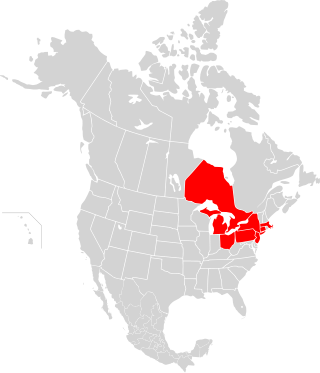
The Northeast blackout of 2003 was a widespread power outage throughout parts of the Northeastern and Midwestern United States, and most parts of the Canadian province of Ontario on Thursday, August 14, 2003, beginning just after 4:10 p.m. EDT.
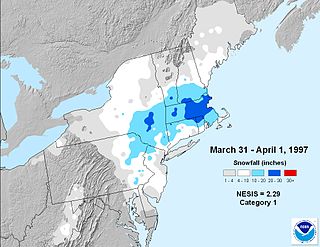
The 1997 April Fool's Day blizzard was a major winter storm in the Northeastern United States on March 31 and April 1, 1997. The storm dumped rain, sleet, and snow from Maryland to Maine leaving hundreds of thousands without power and as much as three feet of snow on the ground.
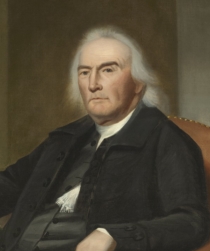
Abraham Davenport (1715–1789) was a Connecticut councillor and judge from Stamford. He was celebrated in a poem by John Greenleaf Whittier for his stoical reaction to New England's Dark Day (1780).

Hancock Shaker Village is a former Shaker commune in Hancock and Pittsfield, Massachusetts. It emerged in the towns of Hancock, Pittsfield, and Richmond in the 1780s, organized in 1790, and was active until 1960. It was the third of nineteen major Shaker villages established between 1774 and 1836 in New York, New England, Kentucky, Ohio and Indiana. From 1790 until 1893, Hancock was the seat of the Hancock Bishopric, which oversaw two additional Shaker communes in Tyringham, Massachusetts, and Enfield, Connecticut.
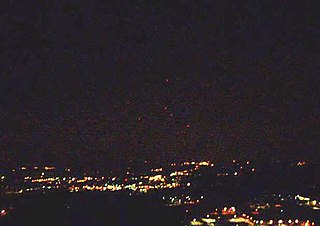
The 2009 Morristown UFO hoax was a series of aerial events involving mysterious floating red lights in the sky, that first occurred near Morristown, New Jersey, on Monday, January 5, 2009, between 8:15 pm and 9:00 pm. The red lights were later observed on four other nights: January 26, January 29, February 7, and February 17, 2009. The events were later revealed to be a hoax, perpetrated by Joe Rudy and Chris Russo. Rudy and Russo have described the hoax as a social experiment, with the ambition of exposing "ufology" as a pseudoscience and raising consciousness around unreliability of eyewitness claims.

The May 2010 Quebec wildfires were a series of wildfires that affected over 90,000 hectares from late May to June 2010. Over 120 fires broke out in one week, with most near La Tuque, 300 kilometers (190 mi) northeast of Montreal. Smoke from the wildfires caused smog warnings and resulted in heightened air quality indices throughout southern Quebec, including Montreal, Laval, and the Estrie, Montérégie, Lanaudière, Mauricie, and Centre-du-Québec regions; areas such as Ottawa and New England as far southeast as Eastern Massachusetts and Rhode Island also reported poor air quality. The First Nations reserve of Wemotaci, where firefighters were forced to retreat due to the intensity of the fires and density of the resulting smoke, was evacuated, with more than 1,300 residents being temporarily relocated to the neighbouring city of La Tuque. Marcel Trudel, spokesman of Sopfeu—the organization responsible for containing the wildfires—reported that flames as high as 30 metres (98 ft) had been observed near the reserve. Three other communities—two of them also First Nations reserves—were evacuated as well. More than 1,200 firefighters worked to control the fires, including 200 from other provinces as well as from the U.S. states of Maine, Massachusetts, New Hampshire and Rhode Island.
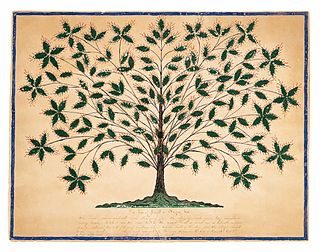
The chronology of Shakers is a list of important events pertaining to the history of the Shakers, a denomination of Christianity. Millenarians who believe that their founder, Ann Lee, experienced the Second Coming of Jesus Christ, the Shakers practice celibacy, confession of sin, communalism, ecstatic worship, pacifism, and egalitarianism. This spans the emergence of denomination in the mid-18th century, the emigration of the Shakers to New York on the eve of the American Revolution, subsequent missionary work and the establishment of nineteen major planned communities, and the continued persistence of the faith through decline into the 21st century.

The North Complex Fire was a massive wildfire complex that burned in the Plumas National Forest in Northern California in the counties of Plumas and Butte. 21 fires were started by lightning on August 17, 2020; by September 5, all the individual fires had been put out with the exception of the Claremont and Bear Fires, which merged on that date, and the Sheep Fire, which was then designated a separate incident. On September 8, strong winds caused the Bear/Claremont Fire to explode in size, rapidly spreading to the southwest. On September 8, 2020, the towns of Berry Creek and Feather Falls were immediately evacuated at 3:15 p.m. PDT with no prior warning, By September 9, 2020, the towns of Berry Creek and Feather Falls had been leveled, with few homes left standing. The fire threatened the city of Oroville, before its westward spread was stopped. The fire killed 16 people and injured more than 100. Among the 16 fatalities was a 16-year-old boy. The complex burned an estimated 318,935 acres (129,068 ha), and was 100% contained on December 3. The fire was managed by the U.S. Forest Service in conjunction with Cal Fire, with the primary incident base in Quincy. The North Complex Fire was the sixth-largest in California's modern history, and the deadliest fire in the 2020 California wildfire season.
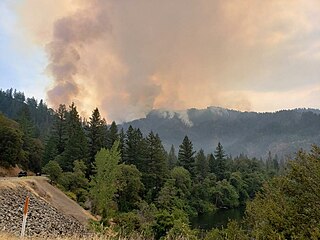
The Monument Fire was a wildfire west of Big Bar in Shasta-Trinity National Forest, Trinity County, California in the United States. The fire, which was started by a lightning strike, was first reported on July 30, 2021. The communities of Big Flat, Big Bar, Del Loma, and Cedar Flat are evacuated. Highway 299 is closed in the area. The fire has destroyed four structures, including three homes. As of the evening of October 27, the fire has burned 223,124 acres (90,295 ha) and is fully contained.

The Oak Fire was a destructive wildfire that burned north of the community of Bootjack in Mariposa County, California and in the Sierra National Forest, during the 2022 California wildfire season. The fire was reported on July 22, 2022, and burned 19,244 acres (7,788 ha) before being fully contained on September 2, 2022. On June 16, 2023, a 71-year-old man was arrested on suspicion of arson for starting the fire.
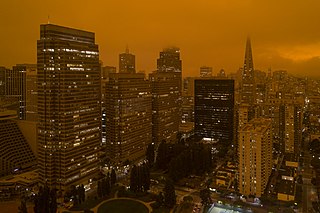
Orange Skies Day was a climatological event that occurred in the San Francisco Bay Area on September 9, 2020. Temperatures varied in different places, but the sky was overall orange.




















